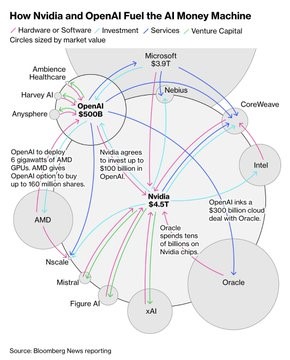Share This Post Today!
Lighthouse of Praia da Barra, Gafanha da Nazare, Portugal

This lighthouse was built in 1893 and remains active today. The lighthouse stands at 203 feet tall and is Portugal’s tallest lighthouse. The lighthouse is open to the public for tourism but is only open for tours 3 hour per week on Wednesdays.
El Hank Lighthouse, Casablanca, Morocco
This lighthouse is located on the tip of El Hank, just west of the port of Casablanca. The lighthouse is owned and operated by Morocco’s Port and Maritime Authority. The lighthouse is the tallest in Morocco and was restored in 1916.
*Feel free to send us your photos of Lighthouses to be featured in our weekly market observations.
Remembering the fallen
We wanted to take a moment as we observe Veterans Day in the United States and Remembrance Day in Canada on November 11th, to honor and thank the brave men and women who have served in our armed forces. These commemorative days remind us of the extraordinary sacrifices made to protect the freedoms and values we hold dear.
The 50-year mortgage
Over the past weekend, President Trump and his administration announced something big for consumers, homeowners, and financial institutions: the 50-year mortgage. Trump announced the new mortgage product on social media, paired with a picture of himself and the term 50-year mortgage, and a picture of President Roosevelt and the term 30-year mortgage. For those of you who do not know, the 30-year mortgage was launched in the U.S. in 1949 by the Fair Housing Administration while Roosevelt was President.
We will not dive deep into the numbers but will simply say this product is great for people who want to pay less on a monthly basis for LONGER. Mortgages will become cheaper, but homeowners will end up paying much more for their residences due to a longer mortgage term. The 50-year mortgage will result in homeowners paying “rent” to banks and other financial institutions. According to Barron’s, the 50-year mortgage will save borrowers $280 per month (on a $400,000 loan, assuming a 6.3% interest rate) versus the 30-year mortgage. However, the same borrower would end up paying over $400,000 more in interest when opting for a 50-year mortgage.
To put it frankly, this is a solution for those who have a month-to-month view and lack an understanding of interest payments and amortization periods. The White House said in an email that it continues to evaluate ideas to improve housing affordability. We understand the need for solutions to solve the issues that exist in the housing market in the U.S. (and Canada), but this is not one. Perhaps banning or creating rules for BlackRock and massive asset managers from owning residential homes could help solve the issue.
The 50-year mortgage will also keep prices elevated in the short term, as some financially illiterate buyers could jump to buy a home with the decrease in their monthly payment, ignoring (by utilizing the 50-year mortgage) the increase in the total cost. A senior economist from Realtor.com ran some scenarios and stated that this policy move will increase home prices as demand will increase with no change to the supply of American housing. He stated that the potential savings could be completely negated due to pure supply-demand dynamics.
AI risks
The risks across capital markets still exist. Although markets have continued their upward surge in 2025, we think numerous risk factors remain elevated across financial markets. These risks include the valuation and growth of artificial-intelligence stocks and the overall market’s dependency on just a few names. In our past editions of this commentary, we have talked about the risks associated with names such as Nvidia, AMD, big tech stocks, AI startups, as well as how we planned to play AI through utilities, energy, and some value plays in the AI industry. We have been happy with our approach, and our thesis has not changed.
We will not be diving deeper into what we have said in the past; this week, we want to talk about something new in AI.
This new topic is yet another risk factor in AI that could impact markets, and it’s actually a balance sheet item.
CoreWeave, a U.S.-based AI cloud-computing company, reported its third-quarter earnings this week, and it caught the eye of many investors (for all the wrong reasons). CoreWeave shares IPO’d earlier this spring and have been on quite the wave, shares are up 127% so far this year but are down 36% over the last month. The reason shares pulled back this week, and investors are holding their breath regarding AI is due to the rising leverage CoreWeave has added. Earlier this year, CoreWeave reported $7.9 billion in debt; this week, they reported $14 billion. The company’s interest expense for Q3 was $311 million and is expected to be $1.25 billion this year.
On CoreWeave’s earnings call, management said it fell behind schedule last quarter, which prevented it from fulfilling a major contract. This resulted in CoreWeave trimming its revenue forecast for the fourth quarter. This delay underscores a growing concern from investors that a small loss in revenue (or delayed revenue recognition) could translate to major pressure on profits, given the amount of leverage (and amounts paid in interest) on CoreWeave’s balance sheet (income statement).
Rising debt levels are likely to become a growing focus for investors in the AI trade. The largest hyperscalers like Microsoft, Google, and Amazon have significant financial flexibility, while smaller companies like CoreWeave are tapping high-yield debt markets to fund their own ambitions. Investors will be watching revenue and profits very closely as both are needed to justify many equity valuations and satisfy corporate lenders.
Tech companies are tapping credit markets at a rapid rate. Last month, Meta and Blue Owl completed an off-balance sheet transaction that is the largest private credit transaction ever to fund the buildout of a data center. Bank of America data suggest approximately $93 billion in new debt has been sold by the 5 biggest hyperscalers since the beginning of September. Data suggest another $100 billion is expected next year (in 2024, the annual number was $17 billion). Morgan Stanley estimates that the Big 5 (AI hyperscalers) will need to spend a combined $2.9 trillion on AI infrastructure by 2028, with $1.4 trillion coming from new debt. As this debt is piled onto companies’ balance sheets, many worry that Meta and Oracle (among others) could face serious issues as their capital spending could exceed their operating cash flow. This issue will lead to higher borrowing costs and greater use of private credit structured debt products. Meta has already begun to use both direct capex and off-balance sheet vehicles to preserve its leverage. Analysts have not begun to worry about the likes of Alphabet, Microsoft, and Amazon as their operating cash flows continue to grow.
The added borrowing has not impacted the bond market, as AI-related issuance only accounts for 5% of the investment-grade deals that have been priced this year. Eventually, this trend will change as more capital will begin to chase AI even in credit markets.
A big Nvidia sale
On Tuesday, Nvidia shares pulled back for a few reasons. The first driver of this was CoreWeave’s earnings, which came in softer than expected, as we highlighted above. CoreWeave has become an integral piece in the overall AI industry as it has inked deals with the likes of OpenAI and Meta. CoreWeave has also inked a few deals with Nvidia, who is an investor in the company is also. Another driver of Nvidia shares pulling back came from a disclosure. On Tuesday, SoftBank disclosed the sale of $5.83 billion in Nvidia stock in its earnings release. The stock sale came in October.
The sale is quite insignificant when you compare the size of the sale to Nvidia’s market capitalization (approaching $5 trillion), but it comes in the run-up to Nvidia’s next earnings. Nvidia is due to report on its third-quarter earnings on November 19th. Wall Street remains bullish on Nvidia ahead of its earnings, but there has been growing debate about stretched valuations and circularity across the industry.

SoftBank said its disclosed sales of Nvidia and two other companies will help the company fund its investment in OpenAI and acquire a robotics unit from the company. Reportedly, SoftBank required $30.5 billion to fund investments this quarter. The amount it will reportedly invest this quarter is more than it has invested in aggregate over the two prior years combined.
SoftBank doubled its profit in this earnings report, driven by AI portfolio companies seeing their valuations expand, including OpenAI. In SoftBank’s earnings release, the company made sure to say that this Nvidia sale does not change their view on the company, and that they still believe in the AI trade.
Either way, it is interesting timing for SoftBank as Nvidia gets set to release its earnings.
Following Musk’s lead
Coinbase has officially moved its location of incorporation from Delaware to Texas. The move follows a trend of companies reincorporating in Texas. Elon Musk kicked this trend off with his companies, Tesla and SpaceX. Just like Musk, Coinbase’s CEO was a major supporter of President Trump in 2024. Musk’s move, which kicked off this trend, was due to a ruling in a court of Delaware that ordered Tesla to rescind a 2018 pay package for Elon Musk.
Last week, Tesla shareholders approved a pay package for Elon Musk that could reach $1 trillion if milestones are reached.
A handful of other large firms have also announced their departure from Delaware, including TripAdvisor, Dropbox, and Andreessen Horowitz. Delaware has long been the dominant state for U.S. companies to incorporate due to its flexible corporate code and expert judiciary, which has balanced the rights of shareholders and executives. Companies are moving to Texas for a variety of reasons, including a law that limits shareholder lawsuits against insiders for breach of fiduciary duty.
We think this Texas trend will continue. The world of finance is moving to Texas. A few weeks ago, we mentioned the launch of a Texas-based stock exchange, which could eventually be an alternative to the NYSE and Nasdaq. Numerous banks have announced new offices and campuses in Texas, including JPMorgan, Goldman Sachs, Charles Schwab, and Bank of America. The growth in Texas is undeniable, and its pro-business climate, paired with economic growth, is attracting young and skilled workers at a rapid rate.
This shift in Texas is something we have been forecasting for a few years now. Our alternative assets program has been investing in Texas real estate projects for a few years now. These demographic shifts continue to support our thesis in the state.
Canadian staple reports strong numbers
The largest Canadian supermarket operator, Loblaws, reported earnings on Wednesday morning, and we were quite pleased with the numbers reported. We have exposure in certain accounts to Loblaws, a select competitor, and the overall consumer staples industry in Canada through our relative strength platform.
We see Loblaws and other names in the staple industry in Canada as strong hedges against inflation, stable cash flow producers, and low volatility positions in a well-diversified portfolio. Loblaws and many of its competitors have betas below 0.5, reflecting their defensive nature, especially in uncertain economic environments. Our overall investment thesis for Loblaws continues to hold (in our eyes). We like the company for a variety of reasons, including its dominant market position, stable growth, recession-resilient demand (given the inelastic nature of grocery and pharmacy demand), expansion plans, diversification into non-food industries, and valuation.
Compared to competitors, Loblaws trades at a slight premium, but that is justified by the company’s strong growth prospects and market dominance. On a Forward P/E basis, Loblaws trades around 21x, and its EV/EBITDA sits just below 12x. We are comfortable with this slight premium valuation relative to a few competitors and their historic multiples.
Loblaws earnings-per-share and revenue for the third quarter beat street estimates and rose year-over-year (YoY). Revenue jumped by 4.6% YoY, and operating income jumped by 4.2%. These strong numbers were driven by discount banners, which outperformed conventional stores. The numbers paint a picture that grocery stores in Canada are seeing resilient demand despite economic conditions for many Canadians weakening. Loblaws’ focuses on its discount brands, Maxi, and No Frills, as well as value-driven programs, including keeping certain prices low and major promotions that have helped attract more budget-conscious consumers. During the quarter, the company opened 29 new discount stores and plans further openings with expectations of reaching profitability within three years, which will increase long-term growth in sales and earnings. Loblaws’ plan from last year aimed to open 80 new stores in 2025, supported by the company’s large-scale $10 billion commitment to the Canadian economy over the next 5 years. Their commitment focuses on modernizing and expanding its network, improving supply chains, and opening new stores.
Loblaws’ ecommerce sales jumped by 18% YoY as the company continues to invest in expanding its online reach. Both drug and food retail sales increased on an annual and quarterly basis. The retailers’ gross profit margin also increased by 20 basis points, which management said was aided by reduced shrinkage.
These strong results led Loblaws to raise its annual profit forecast for 2025 despite macroeconomic uncertainties.
Loblaws’ purchased 6.8 million shares for $381 million during the quarter. On an annual basis, Loblaws’ has repurchased $1.283 billion in shares. Loblaws’ has steadily decreased its shares outstanding over the last 10 years as it continues to increase shareholder value. Loblaws’ pays a small dividend to shareholders, which continues to be supported by earnings and cash flow generation.
Loblaws’ shares increased by almost 3% on Wednesday and are close to 52-week highs. Shares are up 23% so far in 2025.
The company continues to face some macroeconomic uncertainties tied to consumer resilience, which management highlighted as its largest short-term headwind.
Disclaimer: MacNicol & Associates Asset Management holds shares of Loblaws (L: TSX) across various client accounts.
MacNicol & Associates Asset Management
November 14th, 2025
Download in PDF format:



